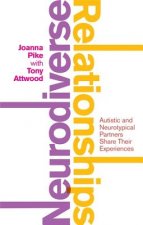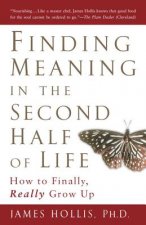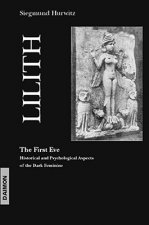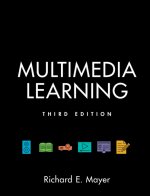
Kód: 05285038
Bigorexia. When 'big' isn't big enough.
Autor Gary Elliott
Seminar paper from the year 2010 in the subject Psychology - Miscellaneous, Atlantic International University, language: English, abstract: The term bigorexia nervosa , along with another synonym reverse anorexia , are nicknames f ... celý popis
- Jazyk:
 Angličtina
Angličtina - Vazba: Brožovaná
- Počet stran: 28
Nakladatelství: Grin Publishing, 2014
- Více informací o knize

Dárkový poukaz: Radost zaručena
- Darujte poukaz v libovolné hodnotě a my se postaráme o zbytek.
- Poukaz se vztahuje na celou naši nabídku.
- Elektronický poukaz vytisknete z e-mailu a můžete ihned darovat.
- Platnost poukazu je 12 měsíců od data vystavení.
Více informací o knize Bigorexia. When 'big' isn't big enough.
Nákupem získáte 104 bodů
 Anotace knihy
Anotace knihy
Seminar paper from the year 2010 in the subject Psychology - Miscellaneous, Atlantic International University, language: English, abstract: The term bigorexia nervosa , along with another synonym reverse anorexia , are nicknames for muscle dysmorphia. Muscle dysmorphia is deemed to be a sub-type of body dysmorphic disorder. It is seen primarily in men who usually perceive themselves as puny, or not muscular enough. The man or boy with muscle dysmorphia is bombarded with obsessive thoughts that their muscles aren t big enough and feel small and weak, even though, in many cases, they may actually have large, strong muscles.§§The Diagnostic and Statistical Manual of Mental Disorders, fourth edition (DSM-IV) describes body dysmorphic disorder (BDD) as a preoccupation with a defect in appearance. The defect is either imagined or minor, but if a defect is present, the individual s concern about the defect is markedly excessive in comparison with the severity of the defect (Claiborn & Pedrick: 2002). Sufferers of Muscle Dysmorphia, like others with BDD, see parts of their body as defective. This excessive preoccupation with body size and muscularity causes the sufferer to feel small when they re actually big.§§In Paterson (2008), muscle dysmorphia is defined as a syndrome seen in both men and boys who feel dissatisfied with their bodies; not believing they are muscular enough. Morgan (2008) explains that at the root of muscle dysmorphia is a distortion of body image. Body dysmorphia occurs almost exclusively in males and is a condition that consists of believing that one cannot be big enough (Andersen et al: 2000). In the Psychology Today magazine of 1997, it was reported that 43% of men interviewed were dissatisfied with their overall appearance; this is a dramatic increase form 15% in 1972 and 34% in 1985; so much so that Claiborn & Pedrick (2002) suggest that male body image dissatisfaction is catching up with that of women. Andersen et al. (2000) purports that more men than ever are dissatisfied with their weight, but unlike women, half of them want to get heavier, almost always in the form of increased muscle. In Phillips (2009) we discover that approximately one-quarter of men with body dysmorphic disorder are preoccupied with their overall body build.§§Morgan (2008) suggests that muscle dysmorphia exists at the end of a spectrum of behaviours designed to reshape the body. A strong parallel with body dysmorphic disorder is the imagined status of the defect in appearance; the brain of the bigorexic sufferer sees a perfectly normal body shape...
 Parametry knihy
Parametry knihy
Zařazení knihy Knihy v angličtině Society & social sciences Psychology
1042 Kč
- Plný název: Bigorexia. When 'big' isn't big enough.
- Autor: Gary Elliott
- Jazyk:
 Angličtina
Angličtina - Vazba: Brožovaná
- Počet stran: 28
- EAN: 9783656673125
- ISBN: 3656673128
- ID: 05285038
- Nakladatelství: Grin Publishing
- Hmotnost: 50 g
- Rozměry: 210 × 148 × 2 mm
- Datum vydání: 17. June 2014
Oblíbené z jiného soudku
-

12 Rules for Life
658 Kč -

Collected Works of C.G. Jung, Volume 9 (Part 2): Aion: Researches into the Phenomenology of the Self
746 Kč -

Mindfulness, 25th anniversary edition
377 Kč -

Neurodiverse Relationships
560 Kč -

Power of Attachment
364 Kč -

Psychology Book
545 Kč -

Heroine's Journey
401 Kč -

Psychology: A Complete Introduction: Teach Yourself
414 Kč -

7 Habits of Highly Effective People Personal Workbook
379 Kč -

On Killing
437 Kč -

12 Rules for Life
532 Kč -

Simpler Life: a guide to greater serenity, ease, and clarity
411 Kč -

Human Tuning Sound Healing with Tuning Forks
514 Kč -

Retrain Your Brain: Cognitive Behavioural Therapy in 7 Weeks
464 Kč -

Psychology of Winning
227 Kč -

Battle Scars
303 Kč -

Finding Meaning in the Second Half of Life
415 Kč -

Visual Intelligence
387 Kč -

Missing Out
303 Kč -

Handbook of Sandplay Therapy
1486 Kč -

Pocket Guide to Sensorimotor Psychotherapy in Context
761 Kč -

Trauma-Sensitive Mindfulness
751 Kč -

Scripts People Live
351 Kč -

Somatic Internal Family Systems Therapy
532 Kč -

Tao of Trauma
512 Kč -

Lilith - The First Eve
590 Kč -

Transformation
328 Kč -

Dictionary of Psychology
383 Kč -

How to Think Like Leonardo da Vinci
398 Kč -

Tinker Dabble Doodle Try
647 Kč -

Aion
987 Kč -

Attachment in Psychotherapy
1057 Kč -

Masochism and the Self
2155 Kč -

New Evil
555 Kč -

Studies In Forensic Psychiatry
871 Kč -

Principles of Psychology (Vol 1)
666 Kč -

Research in Psychology Methods and Design 8e
1698 Kč -

Multimedia Learning
965 Kč -

Firestarters
434 Kč -

Psychologie
1481 Kč -

Losing Reality
500 Kč -

Focus
213 Kč -

What Do You Say After You Say Hello
330 Kč -

The Evolution of Desire
422 Kč -

Psychology and Alchemy
974 Kč -

Man Who Mistook His Wife for a Hat
306 Kč -

Degree in a Book: Psychology
490 Kč -

Oxford IB Diploma Programme: Psychology Course Companion
1423 Kč -

Atkinson and Hilgard's Introduction to Psychology
2022 Kč
Osobní odběr Praha, Brno a 12903 dalších
Copyright ©2008-24 nejlevnejsi-knihy.cz Všechna práva vyhrazenaSoukromíCookies



 Vrácení do měsíce
Vrácení do měsíce 571 999 099 (8-15.30h)
571 999 099 (8-15.30h)